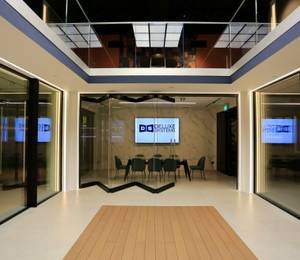Seoul, South Korea – Premiering at the Korean Pavilion at the 18th International Architecture Exhibition – La Biennale di Venezia, 2086: Together How? is a newly-commissioned exhibition curated by Artistic Directors Soik Jung and Kyong Park.
Bringing together architects, community leaders and artists, the project asks how we might work together to endure current and future environmental crises until 2086 – the year when the global population is said to peak. Through a participatory video game, and a series of multidisciplinary installations that encompass photographs, drawings, models, video and architectural installations, the exhibition invites audiences to imagine an ecocultural revolution through a critical reassessment of our capitalist, globalist, and colonial history.
2086: Together How? begins by presenting three small communities engaged in active regeneration projects in South Korea, each varying in population, history and characteristics: inside the global city of Incheon; the colonial historic centre in the mid-size city of Gunsan; and in the rural areas largely resided by migrant workers in the Gyeonggi Province. These locations constitute a cross section of urbanization, modernization, and westernization in South Korea. Working with local communities, a team of architects and community leaders have carried out collaborative research activities, framed by a set of dialectics that have been determinant factors in our ecocultural evolution; for example, how to balance individualism and communalism in future society.
Soik Jung explains: ”Each community is a case study which utilizes the community leader’s deep knowledge of the place and the architect’s spatial analysis to evaluate its current state, and propose site- specific future scenarios leading up to 2086. For instance, in the case of Gunsan, practitioners have explored how to work with abandoned homes and buildings to return the old city’s urban landscape to a more natural state. Moreover, each project is motivated by central concerns of how to cope with decaying urban centers and rural villages due to centuries of uneven capitalist development thinking. As such, these projects are about how the past can be connected with the future, and how localism can reshape globalism.”
Central to the exhibition is a participatory video game that will invite audiences to make decisions in current and future ecocultural scenarios. Rather than focusing on climatic data, the Korean Pavilion encourages visitors to understand how global environmental issues are rooted in humanity’s past choices. Kyong Park adds, “2086: Together How? loops back to our Faustian ideology of progress and how we have sought unlimited material pleasure through industrialization, colonization, and globalization. The exhibition asserts that not only will the environmental crisis force us to change, but it will be our only chance to make a better ecocultural paradigm for the future.”










